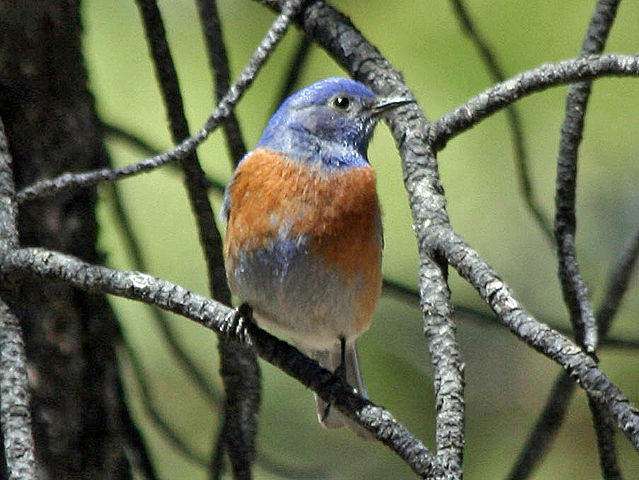Storing more carbon in western Cascades forests could benefit some wildlife species, not others

Forest management policies that aim to store more carbon in the Pacific Northwest may benefit some wildlife species more than others.
According to a recently published analysis, increasing carbon storage could lead to more favorable conditions for northern spotted owls, pileated woodpeckers, olive-sided flycatchers, Pacific marten and red tree voles. These species may benefit from management policies that favor less intensive logging and longer periods between tree harvests.
However, mule deer and western bluebirds may not fare so well. Both species rely on open, early successional forests that could become less common under management policies that reduce harvesting.
The analysis of timber harvesting, wildlife habitat and the amount of carbon stored in vegetation and soils focused on a 400,000-acre landscape in the western Cascade Range. It is one of the most exhaustive studies of its type ever performed. Scientists at Oregon State University, Pacific Northwest Research Station of the U.S. Forest Service, and the University of Connecticut studied the consequences of 13 different logging intervals, from no harvest to removing all live and dead trees every 25 years.
The results were published in Ecological Applications, a professional journal.
"Our analysis shows that implementing forest management strategies to store additional forest carbon will influence habitat for different species, improving or expanding it for some and reducing it for others," said Jeff Kline, lead author and an economist with the U.S. Forest Service. "Although forest managers already know that intuitively, our study helps to put some numbers on the possible outcomes of an array of management options."
The researchers used computer models to simulate the consequences of tree harvesting on wildlife habitat, as well as on the amount of carbon stored in forest ecosystems and in wood products. Their simulations did not focus on public versus private land ownership, but rather on the potential of the landscape to produce carbon storage, timber and habitat under management strategies of all types. They included harvesting operations but not other disturbances stemming from wildfire, storms or climate change.
Existing USDA policy directs the Forest Service to lead efforts to mitigate and adapt to climate change. This study is the first to broadly describe the consequences of one type of mitigation, carbon storage, for other benefits such as wildlife habitat. The results show that management aimed at one goal, such as carbon storage, may lead to trade-offs with other goals, such as wildlife habitat for specific species.
The study enables forest managers to consider the range of long-term outcomes that are possible under forest management scenarios, the scientists said. There may be opportunities to store additional carbon without reducing timber harvests, because current management practices represent only a small fraction of the outcomes that are possible in the western Cascades.
"The study will enable managers to consider more novel forest management possibilities that may be outside of the subset of current forest management strategies in widespread use," said Kline.
Forest managers will need to account for other factors in actually implementing policies to increase carbon storage, the authors concluded. Natural disturbances, climate change and biological processes that might constrain wildlife populations should be considered.
Journal information: Ecological Applications
Provided by Oregon State University

















